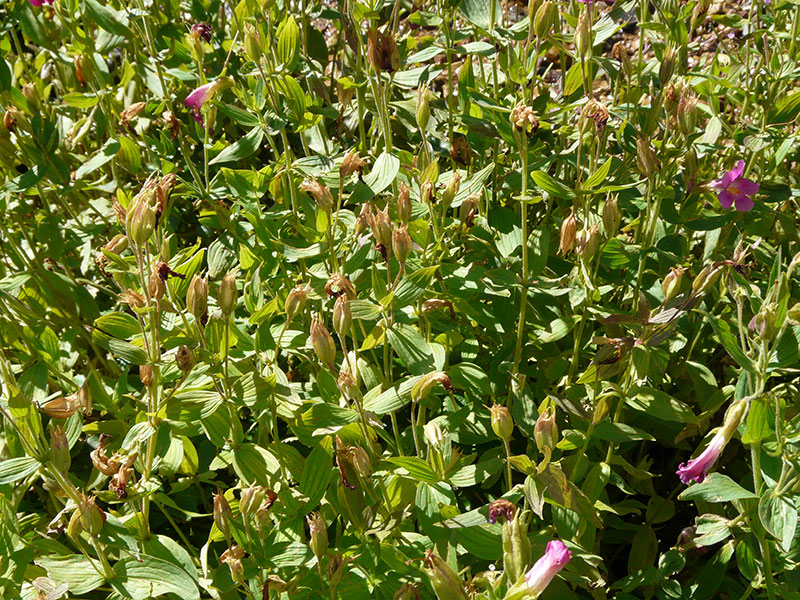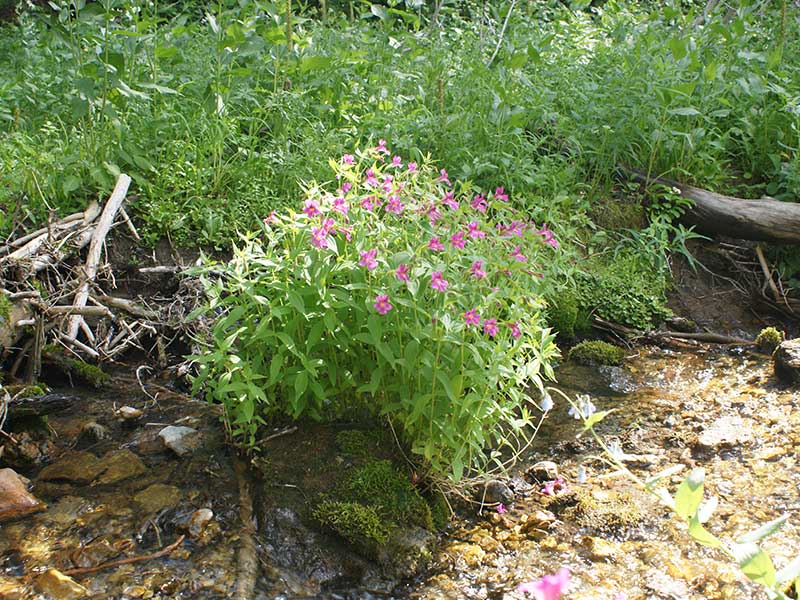Erythranthe lewisii / Lewis’s monkeyflower
- pink to magenta with floral tube, two lips and yellow nectar guides
- usually stream-side in dense clumps
- striking
Synonym: Mimulus lewisii
Also known as: purple monkeyflower, great purple monkeyflower, pink monkeyflower
Lewis’s monkeyflower has an unmistakable pink (pale pink to magenta) flower that is very difficult to overlook. It is primarily found along stream sides where it grows in dense, clonal clumps. The flowers have 5 petals fused into a short tube at the base, and opening at the “mouth” into two weakly-defined lips based on three petals pointing downward and two upward. The lower lobe has speckled red spots and two hairy yellow nectar guides.
If you can get past the flowers themselves, the vegetative tissue of this species is covered with fine hairs. The leaves are broadly lance-shaped, and distinctive in being sessile. They are coarsely toothed, and having prominent veins.
Lewis’s monkeyflower is overall similar to the scarlet monkeyflower (E. cardinalis) which seems not to be present in Idaho. The two are completely interfertile and can form hybrids, but are supposedly generally kept apart by differences in pollinators.
Together with other species in Erythranthe, E. lewisii serves as a model system for ecologists and molecular evolutionary biologists studying pollinator-based reproductive isolation. Although the genome has not yet been sequenced, there are a number of studies including mRNA/transcriptome analysis.
| Color | |
|---|---|
| Family | |
| Blossom size | |
| Inflorescence size | |
| Inflorescence type | |
| When? | |
| Where? |




